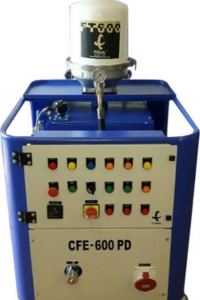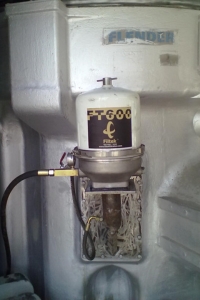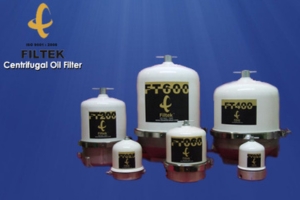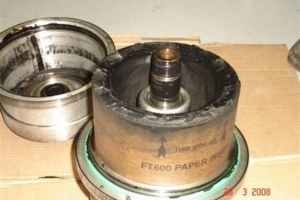EFFECTIVE CONTAMINANT CONTROL IN GEARBOX OILS
The cement and concrete industry has some of the toughest operating conditions in the industrial marketplace, including heavy loads, shock loads, temperature extremes, exposure to the elements, and the constant presence of contaminants due to harsh environments. To run their operations, they use a wide range of equipment, including ball mills, kilns, crushers, vertical mills, bucket elevators, conveyor systems, and mobile plants. FILTEK understands the important role lubricants play in coal, cement, and concrete operations. FILTEK CENTRIFUGAL SYSTEMS can have an immediate impact by increasing machine and oil life and decreasing maintenance costs. It focuses on the removal of wear-causing particles which are not removed by any conventional filtration.
Extreme conditions require high-performance filtration:
The critical equipment in these plants generally has to work 365 days a year, and every hour of downtime is expensive for the company. Lost production is very difficult to replace. Following are some of the common lubricant suffering points for cement and concrete operations:
- Failed bearings: Greases that do not seal effectively will allow contaminants to enter.
- Overheated gearboxes: Cement plant gearboxes tend to be overloaded and consequently they often overheat, resulting in expensive premature wear and failure of the gears. Other common mechanical issues include emulsification of the gear oil due to water contamination and extreme foaming.
- Worn open gears on kilns and ball mills: Kilns and ball mills are two of the most critical pieces of equipment for cement plants. Downtime is not an option for these applications. However, their open gears regularly suffer from pitting and other wear due to insufficient lubrication and shock loading.
FILTRATION OPTIONS :
On-Line Centrifugal Filtration: Centrifugal Oil Cleaners are extremely effective in contamination removal as long as the gearbox is in operation. The centrifuge requires an inlet oil pressure of 4.5 to 7 BAR for efficient RPM generation thereby separating the contaminants heavier than oil due to centrifugal force. A slave pump+motor unit will provide the 6 BAR pressure required to maximize Centrifuge efficacy. Sometimes, Select filter carts for easy maneuverability and allow for a selection of filter ratings (including small amounts of water removal) within the design constraints of the pump on the unit. It is best to dedicate a cart to one oil type or family to avoid cross-contamination of fluids.
At least five to seven times the volume of the oil in the system should be passed through the filter cart to ensure adequate clean up. Be sure that all safety considerations have been covered to avoid deadheading of pumps or exploding filter canisters. On larger units, or particularly where large volumes of oil and/or high levels of cleanliness must be maintained, a permanent off-line circuit should be employed. An extra benefit of the permanent mount is that it can continue to operate while the gearbox is not in use, although the optimum filtering time is during the higher operating temperatures. It is often a good idea to incorporate a cooling system to reduce the oil temperature and increase the oil’s life and improve its performance. Attaining a cleanliness target of ISO 18/16/13 is reasonable. With improvements to that level, machine life extensions in excess of three times are realistic. The cleanliness of units at the commissioning stage is crucial to ensuring successful infant reliability and increased life of the unit. Whenever the machine is opened for repair, flush the box with a low viscosity oil before putting it back into service.

CFE600-2PD unit

Centrifuge installed on Flender gear Box

Filtek Centrifuge Family

Contaminant in Centrifuge Roto
